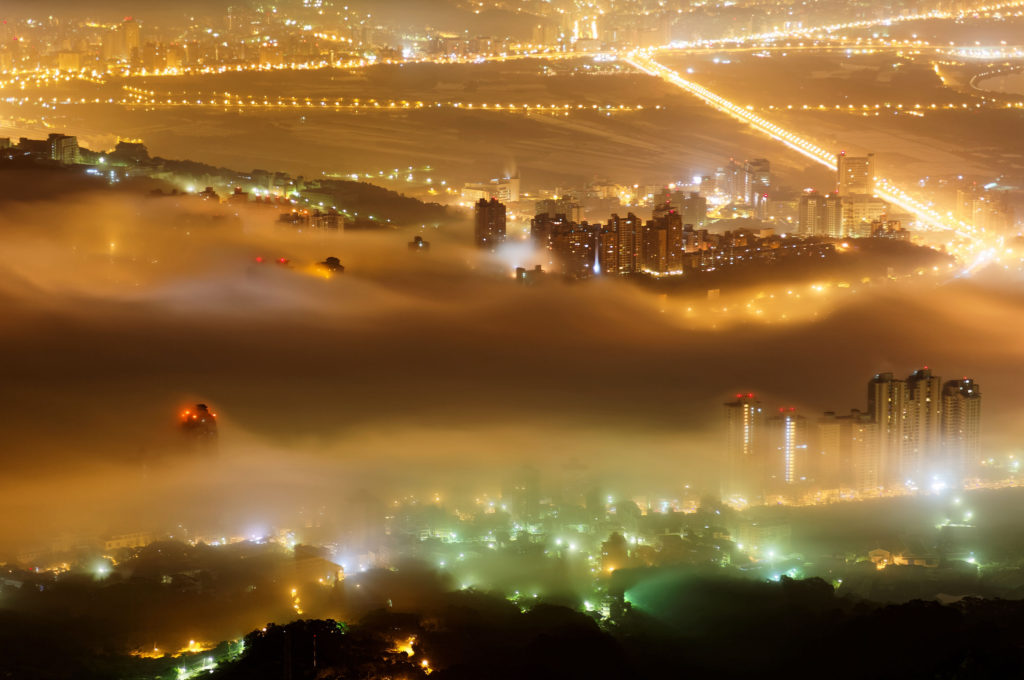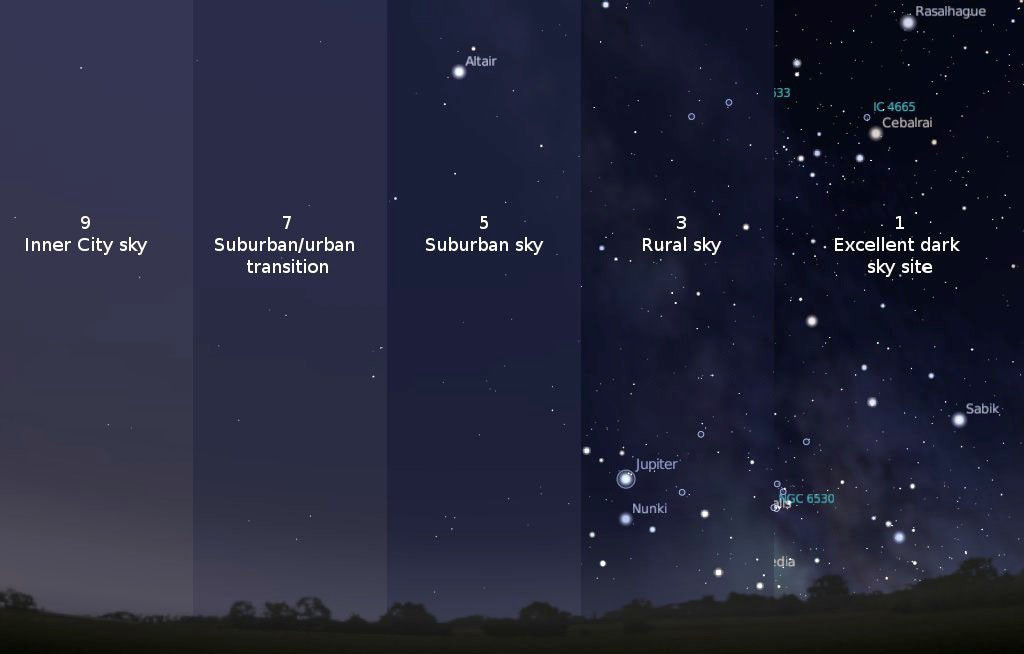Urban Light Pollution
In an age where city skylines are often brighter than the constellations above, the issue of light pollution has become increasingly prevalent. This form of environmental pollution not only obscures our view of celestial wonders but also has far-reaching consequences that many are unaware of. The night sky, a source of inspiration and wonder for millennia, is gradually fading from our sight. Replaced by the artificial glow of streetlights, billboards, and buildings.
The importance of the night sky cannot be overstated. For centuries, it has guided sailors, inspired poets, and provided a canvas for scientific inquiry. Stargazing is not just a hobby. It’s a way to connect with the universe and to appreciate the beauty and vastness of our cosmic home. However, the encroachment of light pollution is making this increasingly difficult. Robbing future generations of the awe and wonder that come from looking up at a star-filled sky.

The Growing Concern
The problem of light pollution is not static; it’s growing at an alarming rate. According to Globe at Night, a citizen science campaign that collects data on light pollution, more than 80% of the world’s population lives under light-polluted skies. In the United States alone, 99% of the population can’t experience a natural night sky. These statistics are corroborated by satellite data. Which shows an increase in brightness levels in urban areas by approximately 2% per year.
Citizen science initiatives like Globe at Night have been instrumental in providing ground-level data that complements satellite observations. While satellites can capture the extent of light pollution from space. Citizen science data helps us understand its impact on a human scale. For instance, the data collected by individuals can reveal how light pollution varies within a city. Affecting different communities to varying degrees.
The convergence of these data sets paints a worrying picture.The urgency to address this issue has never been greater. As the loss of our night skies has implications far beyond the realm of astronomy.
Scientific Consequences
Light pollution has far-reaching implications, especially in the realm of scientific research and astronomical observations. The brightening of the night sky hampers our ability to observe celestial objects clearly. Leading to compromised data and limiting the scope of research. This is particularly concerning for observatories located near urban areas, where the problem is most acute.
Case Study: The Hooker Telescope at Mt. Wilson Observatory

The Hooker Telescope, located at the Mt. Wilson Observatory in California, serves as a poignant example of the detrimental effects of light pollution on scientific research. When the telescope was first installed in 1917, it was the largest telescope in the world and was situated far from the light pollution of nearby cities. However, as Los Angeles expanded, the increasing levels of light pollution severely impacted the telescope’s capabilities.
Today, the Hooker Telescope is no longer used for cutting-edge research. Primarily due to the compromised observational conditions caused by light pollution. The telescope now serves more as an educational tool and a historical monument, rather than the pioneering research instrument it once was.
The case of the Hooker Telescope is not unique; many other observatories around the world are facing similar challenges. The degradation of our night skies not only limits our understanding of the universe but also renders multi-million-dollar research facilities less effective. This has led to a shift in the location of new observatories to more remote areas. Often at a significantly higher cost and logistical complexity.
The scientific consequences of light pollution extend beyond astronomy, affecting other areas of research like ecology and public health. However, the loss of clear night skies has a particularly immediate and visible impact on our quest to understand the cosmos.
Beyond Science
While the scientific consequences of light pollution are significant, the issue also has a profound emotional and psychological impact on individuals and communities. The night sky has been a source of wonder, inspiration, and connection to the cosmos for millennia. It has influenced art, religion, and philosophy, serving as a constant reminder of our place in the universe.
Emotional Connection to the Cosmos
The inability to see the stars, planets, and other celestial phenomena due to light pollution robs us of a deeply human experience. For many, stargazing is not just a hobby but a way to connect with something greater than themselves. It offers a moment of reflection and a break from the fast-paced, technology-driven lives we lead. The loss of this connection can lead to feelings of isolation and a diminished sense of wonder about the world around us.
Psychological Impact
The constant exposure to artificial light, especially during the night, has been linked to various health issues. Including sleep disorders and increased stress levels. The disruption of natural circadian rhythms can have long-term consequences on mental health. Moreover, the loss of natural darkness affects nocturnal animals and can disrupt local ecosystems. Leading to a cascade of negative effects that go beyond human-centric concerns.
Loss of Connection to Nature
In an increasingly urbanized world, the opportunities to experience untouched nature are becoming rare. The loss of dark skies is symbolic of our growing disconnection from the natural world. This disconnection not only deprives us of the mental and emotional benefits of interacting with nature but also makes us less inclined to take action on environmental issues, including light pollution itself.
The impact of light pollution extends far beyond the realm of scientific research. It affects our emotional well-being, psychological health, and our fundamental relationship with the natural world. Addressing the issue of light pollution is not just a scientific necessity but a crucial step in reclaiming our connection to nature and the cosmos.
Ecological Impact

Light pollution doesn’t just obscure our view of the night sky; it also has far-reaching consequences for ecosystems and wildlife. Artificial light disrupts the natural behaviors of many species. Leading to a cascade of ecological effects that can be detrimental to both individual organisms and entire communities.
Predator-Prey Relationships
Many animals rely on the cover of darkness to hunt or avoid predators. Artificial lighting can create an “ecological trap”. Where prey species are more easily spotted and hunted, leading to an imbalance in predator-prey dynamics. For example, sea turtles are known to be disoriented by artificial lights, making them more vulnerable to predators as they try to reach the sea after hatching.
Mating Behavior
Light pollution can also interfere with the mating rituals of various species. For instance, fireflies use their bioluminescent signals to attract mates, but bright artificial lights can outshine these signals, making it difficult for them to find partners. Similarly, birds that sing at dawn can start their songs too early due to artificial lighting, disrupting their mating cycles.
Risks of Extinction
The cumulative effects of these disruptions can be severe. Altered behaviors can lead to decreased reproductive success, increased mortality, and ultimately, the risk of extinction for sensitive species. For example, nocturnal pollinators like moths can be severely affected by light pollution, which in turn impacts the plants that rely on them for pollination.
Ecosystem Imbalance
The effects of light pollution extend to entire ecosystems. The disruption of natural behaviors can lead to imbalances in food webs, nutrient cycling, and other ecological processes. These imbalances can have a domino effect, affecting other species and the health of the ecosystem as a whole.
In summary, the ecological impact of light pollution is a growing concern that extends beyond human-centric issues. It affects the natural world in ways that we are only beginning to understand, and the consequences could be dire if not addressed. Therefore, mitigating light pollution is not just beneficial for stargazing and scientific research, but it’s also crucial for the health and balance of our planet’s ecosystems.
Why Current Measures Fail
While there have been numerous attempts to mitigate the effects of light pollution, many of these measures have proven to be less effective than hoped. From shielded lights to public awareness campaigns, the fight against light pollution is far from over. Here’s why some of these measures are falling short.
Ineffectiveness of Shielded Lights
One common approach to reducing light pollution is the use of shielded lights that direct illumination downwards. While this does minimize the scattering of light into the sky, it doesn’t necessarily reduce the overall amount of artificial light produced. Moreover, shielded lights can still contribute to “skyglow,” a brightening of the night sky over populated areas, which hampers astronomical observations and disrupts ecosystems.
Case Studies of Failed Attempts
- Toronto’s LED Streetlights: In an attempt to reduce energy consumption and light pollution, the city of Toronto replaced traditional streetlights with LED lights. However, the new lights were brighter and emitted a spectrum of light that was even more disruptive to both human sleep patterns and wildlife behaviors.
- Light Pollution in National Parks: Even in areas designated for natural preservation, like national parks, attempts to reduce light pollution have been challenging. For example, despite efforts to implement shielded lighting in Yosemite National Park, skyglow remains a significant issue due to light pollution from nearby cities.
- Public Awareness Campaigns: While campaigns to raise awareness about light pollution have been somewhat successful in educating the public, they have not necessarily translated into policy changes or effective action. For instance, Earth Hour, a global event where people turn off non-essential lights, has symbolic value but has not led to sustained reductions in light pollution.
Policy Gaps and Lack of Enforcement
Many regions lack comprehensive policies to address light pollution, and even where such policies exist, enforcement is often lax. This makes it difficult to ensure that businesses and individuals comply with best practices for outdoor lighting.
Economic Factors
The initial cost of implementing more effective lighting solutions can be a deterrent for many municipalities and organizations. While long-term savings are likely, the upfront investment is often seen as prohibitive.
While current measures to combat light pollution are well-intentioned, they often fall short due to a combination of technological limitations, policy gaps, and economic factors. To make real progress in reducing light pollution, a multi-faceted approach that addresses these challenges is essential.
Solutions and Alternatives
While the challenges of combating light pollution are significant, there are various promising solutions and alternatives that can make a difference. From legislative measures to technological innovations and community initiatives, here’s a look at some of the ways we can tackle this issue.
Legislative Measures
- Clean Air Act Extension: While the Clean Air Act primarily focuses on air pollution, an extension of the act could include provisions for light pollution. This would give federal and state agencies the authority to regulate outdoor lighting in the same way they regulate emissions.
- Local Ordinances: Cities and municipalities can enact local ordinances that require businesses and residents to use shielded, energy-efficient outdoor lighting. Penalties for non-compliance could serve as a deterrent.
- International Agreements: Given that light pollution is a global issue, international agreements could set standards for outdoor lighting and sky quality, similar to agreements on climate change and biodiversity.
Technological Solutions
- Next-Generation Satellites: Advanced satellite technology can provide more accurate data on light pollution levels, helping policymakers make informed decisions. These satellites could also be equipped with technology to mitigate the effects of light pollution on astronomical observations.
- Smart Lighting: Internet of Things (IoT) enabled lighting systems can adjust the intensity of light based on the time of day and presence of people, thereby reducing unnecessary light pollution.
- Spectral Filters: New types of filters can be developed to minimize the types of light that are most harmful to both astronomical observations and ecosystems.
Community Initiatives
- Dark Sky Reserves: Communities can work together to create designated areas free from artificial light, known as Dark Sky Reserves. These areas can serve as sanctuaries for stargazers, astronomers, and wildlife.
- Public Awareness Campaigns: Grassroots movements and NGOs can play a crucial role in educating the public about the importance of reducing light pollution. Workshops, documentaries, and social media campaigns can all contribute to greater awareness.
- School Programs: Incorporating the topic of light pollution into school curricula can educate the younger generation, who will be future policymakers and community leaders.
By combining legislative action, technological innovation, and community involvement, we can create a multi-pronged approach to effectively combat light pollution. This will not only benefit astronomical research but also improve the quality of life for all living beings on Earth.
How to Overcome Light Pollution When Stargazing

For those who are passionate about stargazing, light pollution can be a significant obstacle. However, there are several strategies that can help you enjoy the night sky even in less-than-ideal conditions. Here’s how you can make the most of your stargazing experience despite the challenges posed by light pollution.
Choose the Right Location
- Elevation Matters: Higher altitudes can sometimes get you above the worst of the light pollution. Consider heading to a hill or mountain for clearer skies.
- Distance from City Lights: The further you are from artificial lights, the better. Even a 30-minute drive out of the city can make a significant difference.
- Dark Sky Parks: These are areas designated for their exceptional quality of starry nights and are excellent locations for stargazing.
Use the Right Equipment
- Light Pollution Filters: These are special filters that can be attached to telescopes to block out certain wavelengths of light, making celestial objects more visible.
- Quality Telescope: A good telescope with a larger aperture will collect more light and can help you see fainter objects that are usually drowned out by light pollution.
- Binoculars: For casual stargazing, a pair of binoculars can be more forgiving of light pollution than a telescope and are easier to handle.
Timing is Everything
- Moon Phases: Plan your stargazing activities during a new moon when the skies are darkest.
- Late Nights or Early Mornings: Light pollution can decrease in the very late or very early hours as fewer artificial lights are on.
Digital Aids
- Stargazing Apps: Use apps that can help you identify stars and planets, even when they’re not easily visible to the naked eye.
- Photography: Long-exposure photography can sometimes capture celestial objects that are invisible to the human eye in light-polluted areas.
Get Involved
- Community Groups: Join local astronomy clubs or online forums where you can share tips and locations for stargazing in light-polluted areas.
- Petition for Change: Advocate for better lighting policies in your community, such as shielded streetlights, to reduce light pollution over time.
By taking these steps, you can mitigate the effects of light pollution and continue to enjoy the wonders of the night sky. While it may require a bit more effort and planning, the rewards of seeing a clear, star-filled sky are well worth it.
Conclusion
Light pollution is an ever-growing concern that not only affects our ability to marvel at the night sky but also has broader implications for science, ecology, and our well-being. While the issue is complex and requires concerted efforts from communities, policymakers, and scientists, there are still ways for individuals to enjoy the celestial wonders above us.
The importance of the night sky in human history and culture cannot be overstated. From guiding ancient sailors to inspiring modern science, the stars have always been a source of wonder and knowledge. As we move forward, it’s crucial that we find a balance between the conveniences of modern life and the preservation of our natural nightscapes.
By being informed, taking individual action, and advocating for responsible lighting, we can all contribute to reducing light pollution. In doing so, we not only reclaim our starry nights but also reconnect with a heritage that has illuminated human understanding for millennia.
So, the next time you look up, remember that the sky above is not just a canvas of light in the dark; it’s a part of our shared human experience, deserving of our care and respect. Let’s work together to keep it that way.
